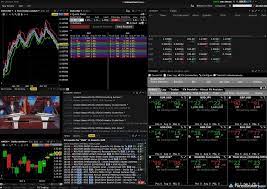Proprietary trading, or “prop trading,” has a rich history rooted in innovation, competition, and adaptation. From its inception to its sophisticated present-day structure, prop trading has shaped financial markets while evolving to meet new challenges and opportunities. This article explores the significant stages that have defined its trajectory.
The Early Days of Proprietary Trading
prop trading began taking shape in the mid-20th century when financial institutions started making investments using their own funds rather than merely executing trades for clients. This move sought to maximize profits by capitalizing on market inefficiencies. With excess capital on hand, banks and other institutions began exploring innovative ways to grow their revenue streams. For many firms, proprietary trading quickly became a profitable venture.
Technological Advancements and the Rise of Prop Trading
The shift into the technological age brought monumental changes to proprietary trading. The 1980s and 1990s, in particular, saw electronic trading platforms and spreadsheets like Microsoft Excel revolutionize how trades were executed. This shift allowed prop traders to move faster and analyze data more effectively. With faster executions and automated strategies, high-frequency trading (HFT) emerged, allowing firms to make numerous trades within seconds to capitalize on minor price differentials.
Additionally, deregulation in several global markets helped fuel the expansion of proprietary desks. Traders now had access to more instruments and opportunities, ranging from stocks and bonds to commodities and derivatives.
The Financial Crisis and Regulatory Shift
The 2008 financial crisis marked a turning point for prop trading. Many analysts argued that proprietary desks’ speculative trading had amplified financial instability. This led to stricter regulations, particularly in the United States, where the Volcker Rule was introduced as part of the larger Dodd-Frank Act. The rule imposed restrictions on proprietary trading by banks to reduce excessive risk-taking.
Today’s Landscape of Prop Trading
Proprietary trading has adapted by shifting to independent trading firms. With advancements in artificial intelligence and cutting-edge algorithms, today’s prop traders rely on technology more than ever to execute strategies with precision.



